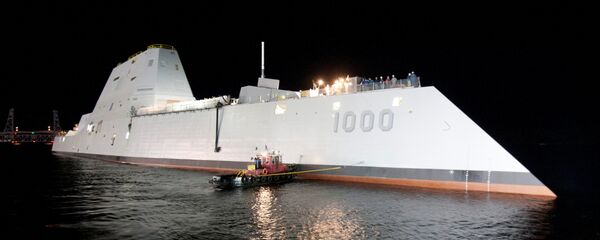The 610-foot, 16,000-ton vessel was towed to the Balboa Naval Station, a former US base. The ship cost $4.4 billion and is the most expensive destroyer built in Navy history.
Few details have been released regarding the incident, but the problem reportedly centers on heat exchangers housed in the vessel’s integrated power plant, which supplies electrical power to many of the ship’s key services including weapons, sensors and its propulsion plant.
The ship also sustained minor cosmetic damage after making contact with the canal’s lock wall.
Defense News quoted a statement released on Monday by Third Fleet spokesman Commander Ryan Perry, saying, "Vice Adm. Nora Tyson, commander, US Third Fleet, has directed USS Zumwalt (DDG 1000) to remain at ex-Naval Station Rodman in Panama to address engineering issues that occurred while transiting the Panama Canal.
"The timeline for repairs is being determined now, in direct coordination with Naval Sea Systems and Naval Surface Forces. The schedule for the ship will remain flexible to enable testing and evaluation in order to ensure the ship's safe transit to her new homeport in San Diego."
The Zumwalt was also sidelined with an engineering casualty in September, a month ahead of its commissioning ceremony in Baltimore. The Navy sent a statement to USNI News explaining the incident:
"The crew discovered the casualty after detecting a seawater leak in the propulsion motor drive lube oil auxiliary system for one of the ship’s shafts. The built-in redundancy of the ship’s propulsion plant allows this first-in-class ship to operate with multiple engine configurations. However, it was determined that the repairs should be completed in port prior to the ship transiting to sea."
Following the vessel’s commissioning, more unspecified engineering issues arose, necessitating extra repair time and propulsion testing at Naval Station Mayport in Florida.



